
德国·奥尔登堡
奥尔登堡成瘾治疗中心
Addiction Treatment Center in Oldenburg
奥尔登堡成瘾治疗中心是一所专为成瘾治疗而设计的专科医院,同时也是当地工业遗址城市更新的代表项目之一。设计从功能空间和和景观院落的关系出发,以清晰结构塑造可高效运行的医疗空间,并结合“自然疗愈”的理念,以自然环境助力舒适惬意的治疗过程。
Fachklinik Weser-Ems, a specialized addiction treatment center in Oldenburg, is a notable project for the urban regeneration of an industrial site. Embracing the concept of "natural healing," the design creates efficient healthcare spaces with a clear structure, as well as provides a comfortable treatment process in natural environment, initiating a harmonious relationship between the built environment and the surrounding natural elements.
奥尔登堡成瘾治疗中心
©HOFF und Partner
01
专为成瘾治疗设计
Designed for Addiction Treatment
奥尔登堡成瘾治疗中心Fachklinik Weser-Ems建于一处工业遗址之上,是该地区“白色园区”(weißen Campus) 城市更新计划的先导项目之一。
中心主要面向酒精、药物、赌博及媒体的成瘾患者,提供个性化和模块化的康复治疗,同时旨在推动医生、康复治疗师以及教育工作者的跨学科合作,进一步帮助患者重新回到正常的工作生活之中。
The Fachklinik Weser-Ems is an addiction treatment center built on an industrial site, which stands as a leading project of the "white campus," one of Oldenburg's urban regeneration plans.
It primarily targets patients with alcohol, drug, gambling, and media addiction, providing personalized and modular rehabilitation treatment; and aims to promote interdisciplinary cooperation among doctors, therapists, and educators, facilitating patients' return to normal work and life.
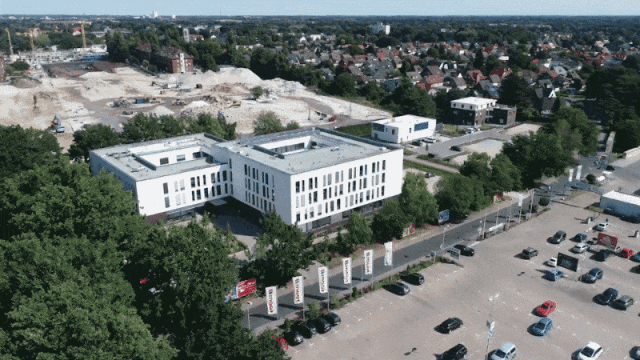
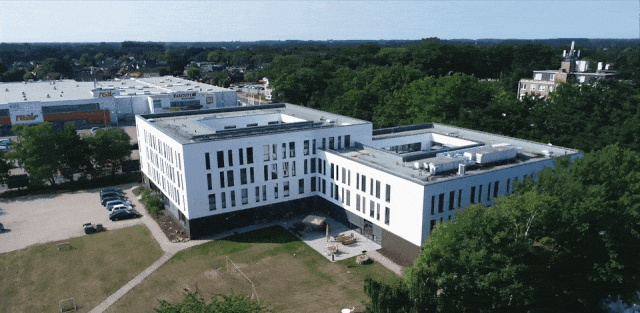
奥尔登堡成瘾治疗中心 - 鸟瞰
©HOFF und Partner
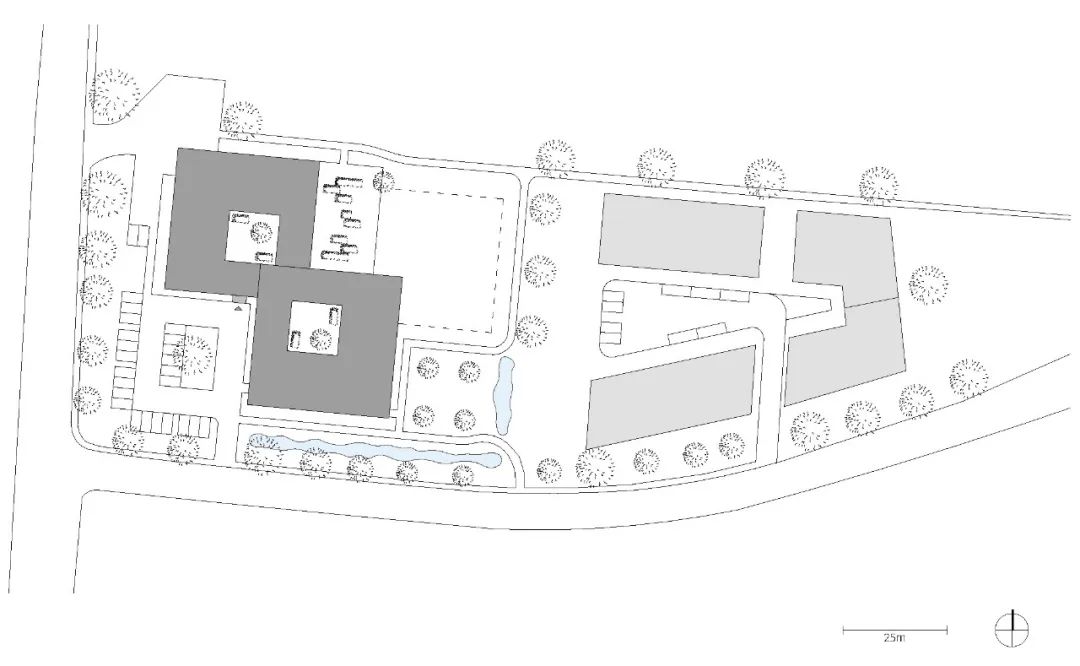
奥尔登堡成瘾治疗中心 - 总平面图
©Gerber Architekten
整个建筑由南侧四层、北侧三层的两个立方体相互交叠组合而成。
在体量上,两个立方体相互交叠,以实现功能性空间的高效划分和彼此连通;并且各自在内部形成了一个花园庭院,将自然引入室内,为建筑内部提供丰富的采光和景观视野。
The building consists of two interlocked cubes, a four-story one on the south and a three-story one on the north.
The two cubes overlap with each other to achieve efficient division and connectivity of functional spaces, and each forms a garden courtyard inside, bringing nature into the interior and providing rich lighting and landscape views.
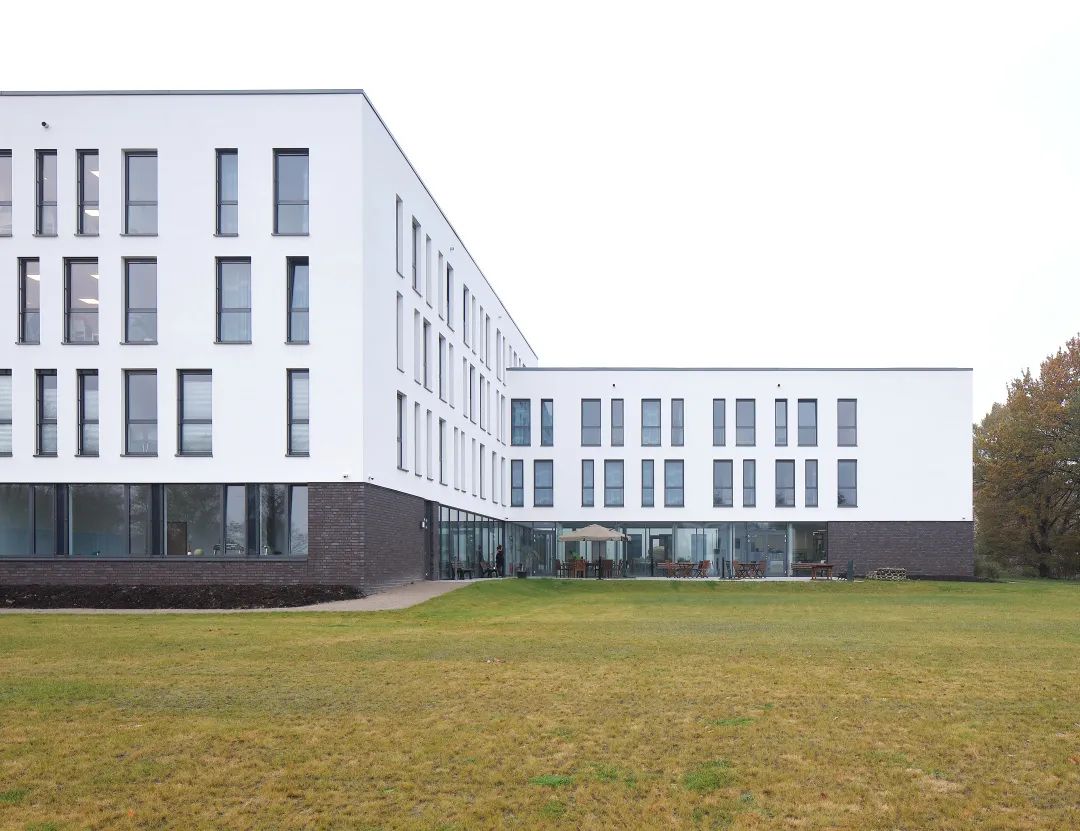
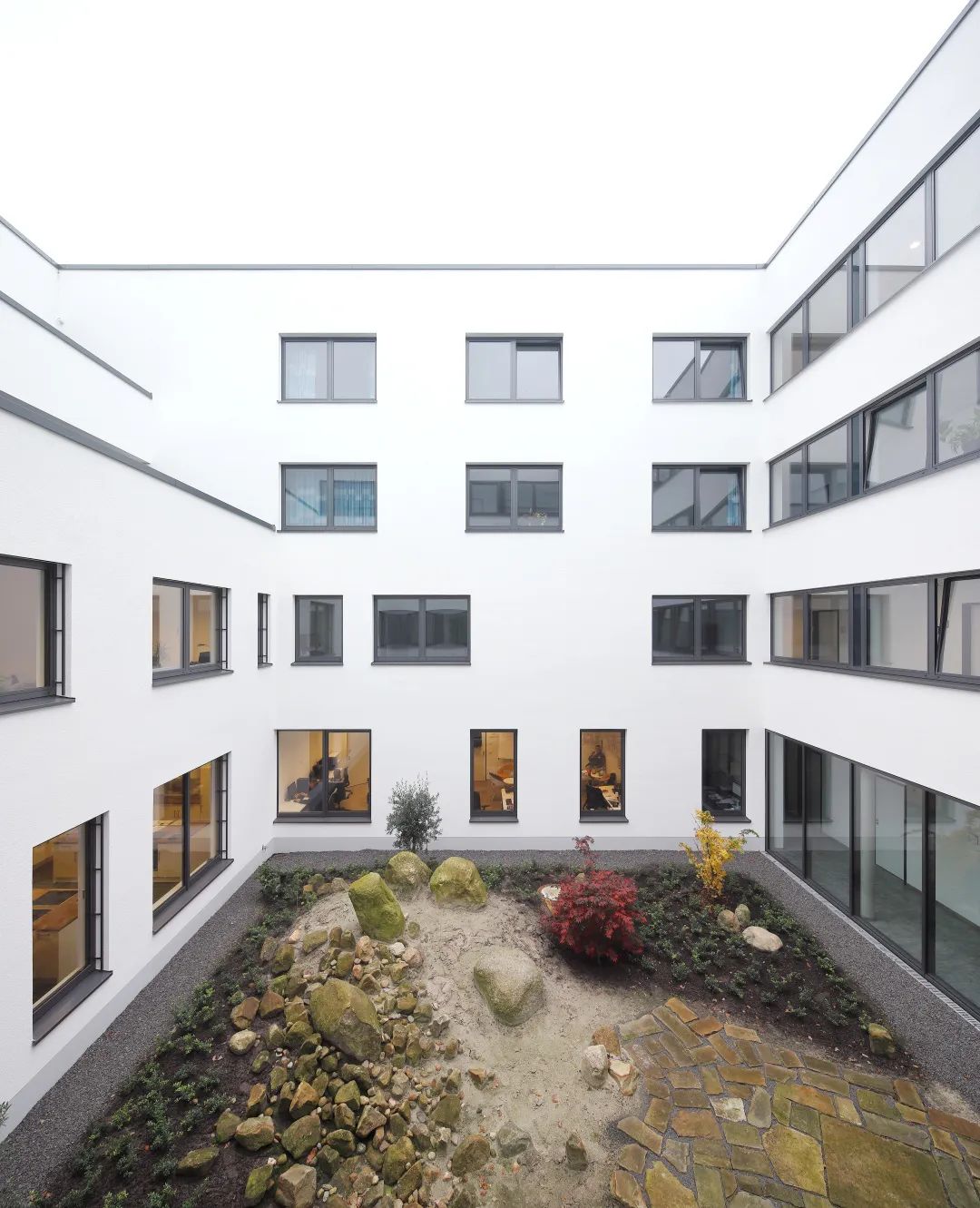
两个立方体相互交叠,内部形成花园庭院
©Jürgen Landes
而在立面上,建筑首层被设计为一个砖砌的基座,以裸露在外的深红色砖面融入环境;上层则参照“白色园区”的规划概念,采用白色石膏立面,并结合不同宽度的开窗,形成富有活力的节奏韵律。
On the façade, the first floor of the building is designed as a brick base, incorporating the exposed deep red brick facade; the upper floors follow the design guideline of "white campus" and adopts a white gypsum facade, combined with windows of different widths to form a vibrant rhythm.
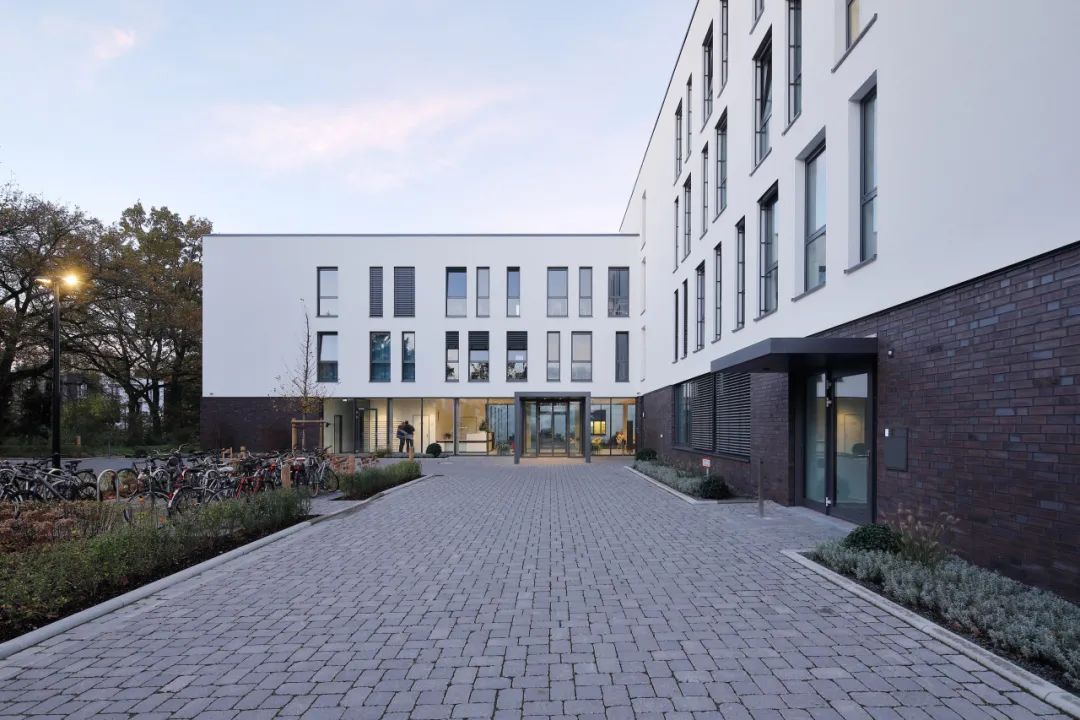
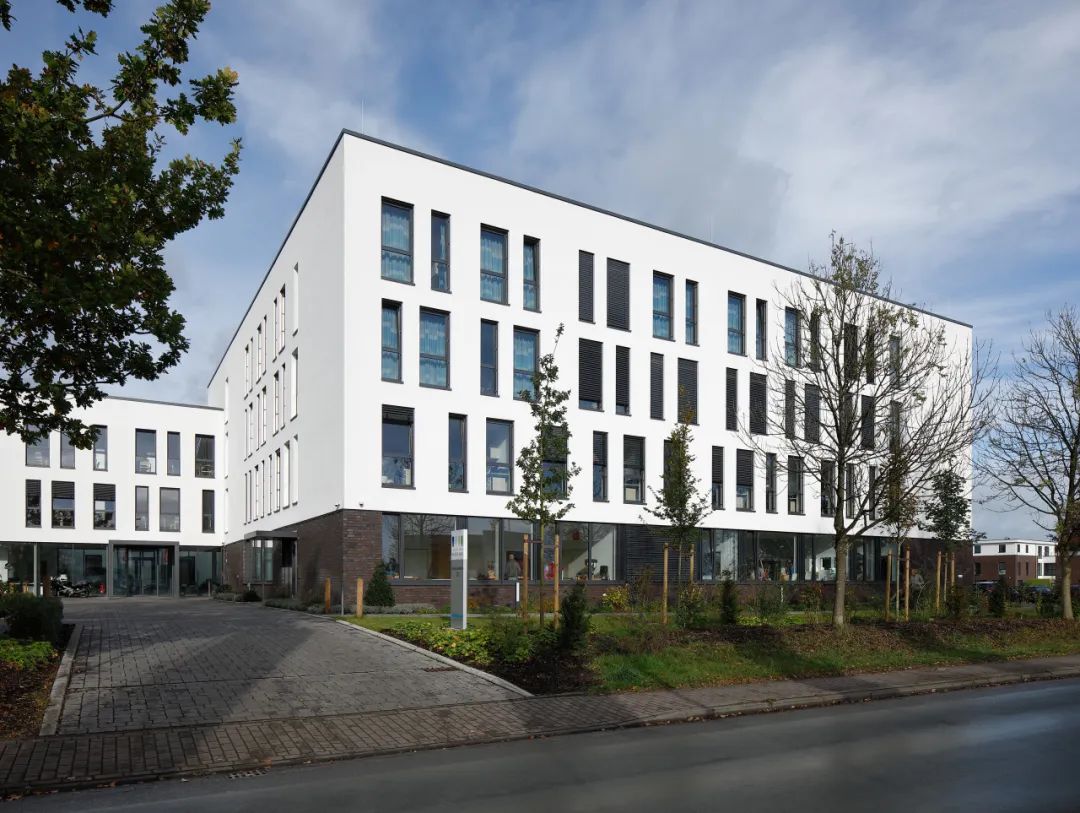
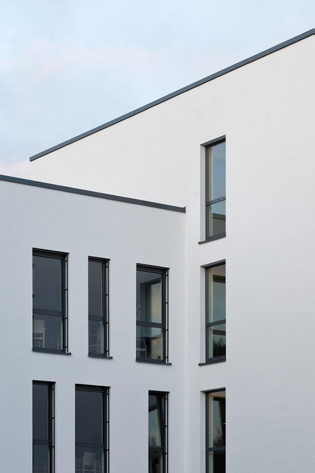
建筑立面 - 底层深红色砖面 + 上层白色石膏立面
©Jürgen Landes
01
高效且人性化的空间
Efficient and Humanized Space
奥尔登堡成瘾治疗中心可服务于20名门诊患者和80名住院患者,并设有专供残障人士使用的治疗设施。综合考虑中心在基础设施、用地、经济性等方面的复杂需求,设计以清晰的结构和高效的布局,打造出了一个友好而人性化的疗愈空间。
The Center is designed to accommodate 20 outpatient beds and 80 inpatient beds, with treatment facilities specifically designed for disabled individuals. Considering the center's complex needs regarding infrastructure, land use, economy, etc., a clear structure and efficient layout have been designed to create a healing space that is friendly and humanized.
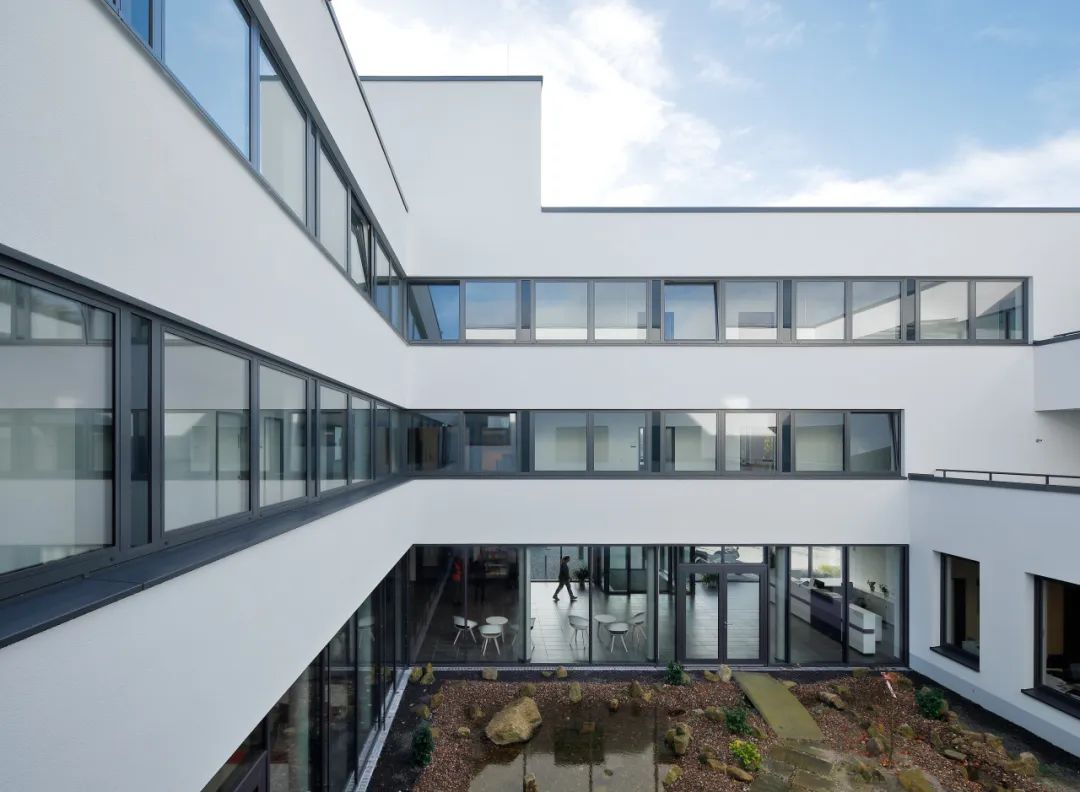
建筑首层为半公共区;上层为住院区+康复治疗区
©Jürgen Landes
从低层到高层,建筑内部逐步从半公共空间转变为私密空间。
建筑的首层北侧容纳了其主要的公共功能,包括休息区、餐饮区、团体活动室、行政办公室、治疗工作室(设有艺术治疗、职业治疗、教学厨房)等。患者或访客可穿过宽敞明亮的入口大厅直达这些区域,并在此欣赏花园庭院的美景。
首层南侧则为非公共医疗区,包含物理治疗室、心理治疗室以及相关的护理服务室等,护理服务室同时兼具了上层住院区的咨询和接待功能。
From the low to high floors, the building gradually transforms from a semi-public space to a private space.
On the north side of the first floor, the building houses its main public functions, including a rest area, dining area, group activity room, administrative offices, and treatment studio (with art therapy, occupational therapy, and teaching kitchen). Patients or visitors can directly access these areas through the spacious and bright entrance hall, enjoying the beautiful scenery of the garden courtyard.
On the south side of the first floor is a non-public medical area, including physical therapy, psychological therapy, and related nursing rooms. It's worth mentioning that the nursing room also serves as an inquiry and reception area for the inpatient area on the upper floors.
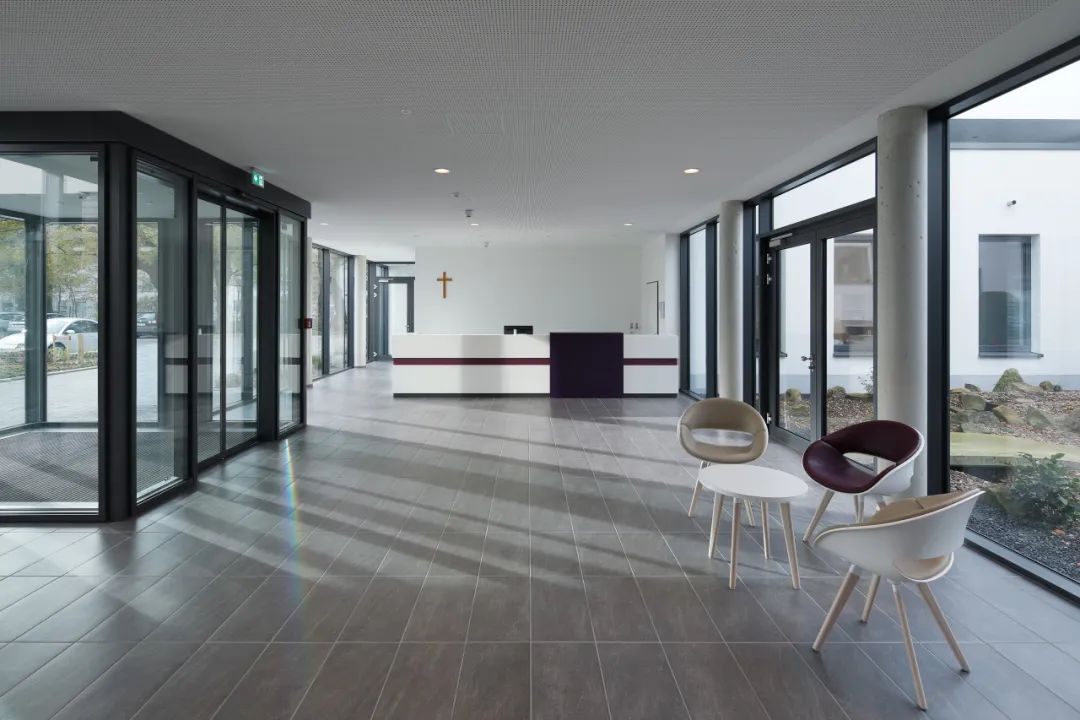
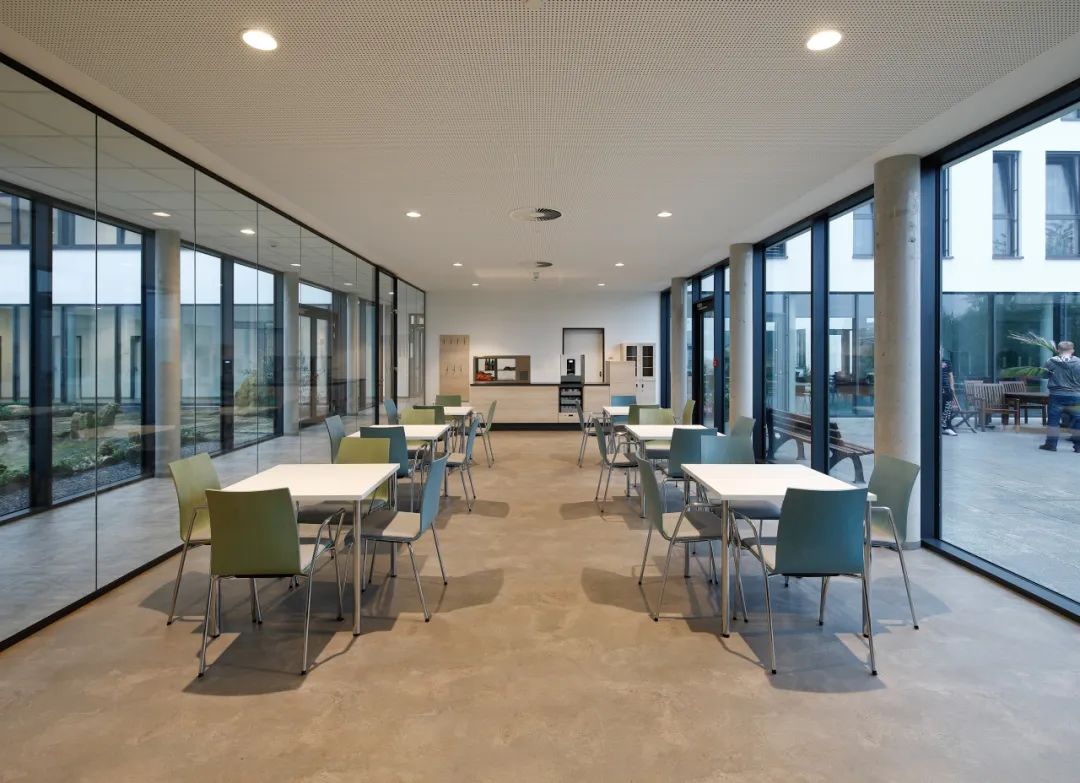
首层公共空间
©Jürgen Landes
建筑的二层至四层为护理治疗区和住院区。
住院区安排在相对较高的楼层,以为患者提供更私密的环境。其中不仅包含设施完善的病房,还配备了娱乐设施和团体活动室,以刺激和促进医患之间和患者之间的沟通,尤其帮助在社会上被孤立的患者重新建立个人社交 。
The second to fourth floors house the treatment area and the inpatient area. The inpatient area occupies the relatively higher floors to provide patients with a more private environment. It includes well-equipped wards, as well as recreation and group activity rooms to stimulate communication among doctors and patients, espeicially fostering interaction for isolated patients to help them rebuild personal social relationships.
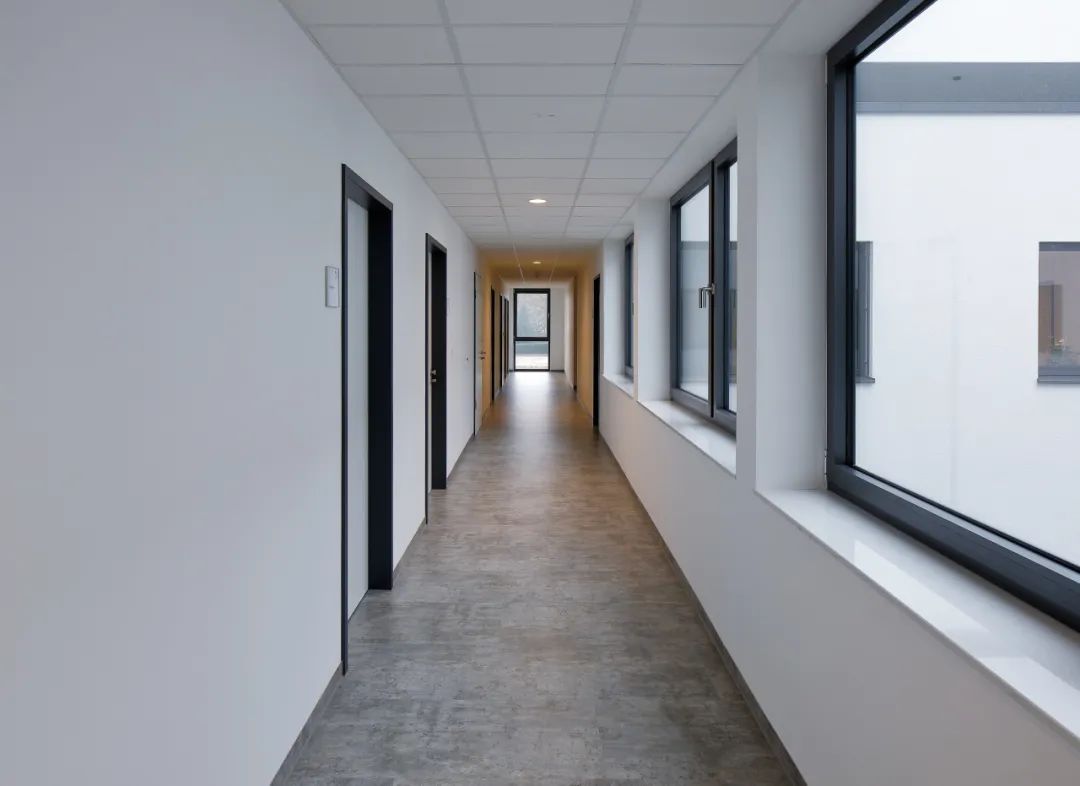
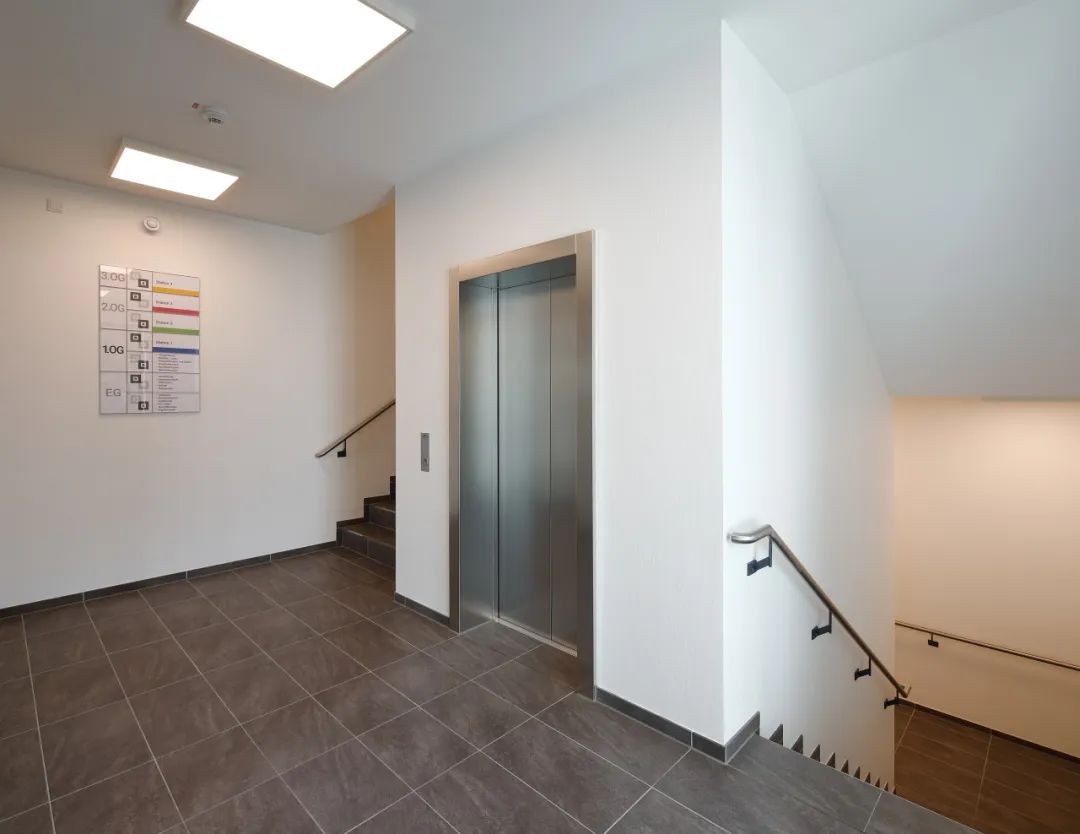
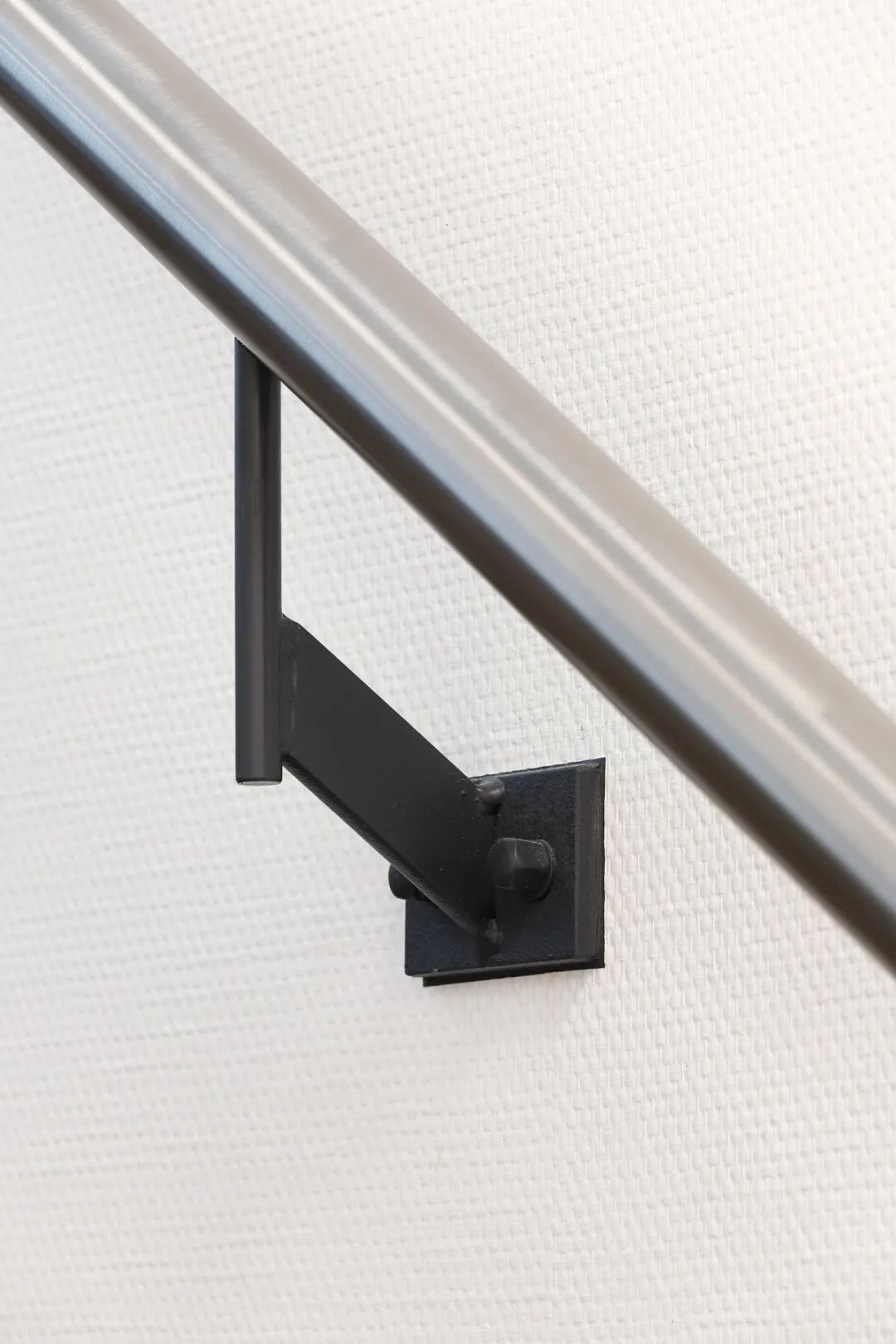
住院区
©Jürgen Landes
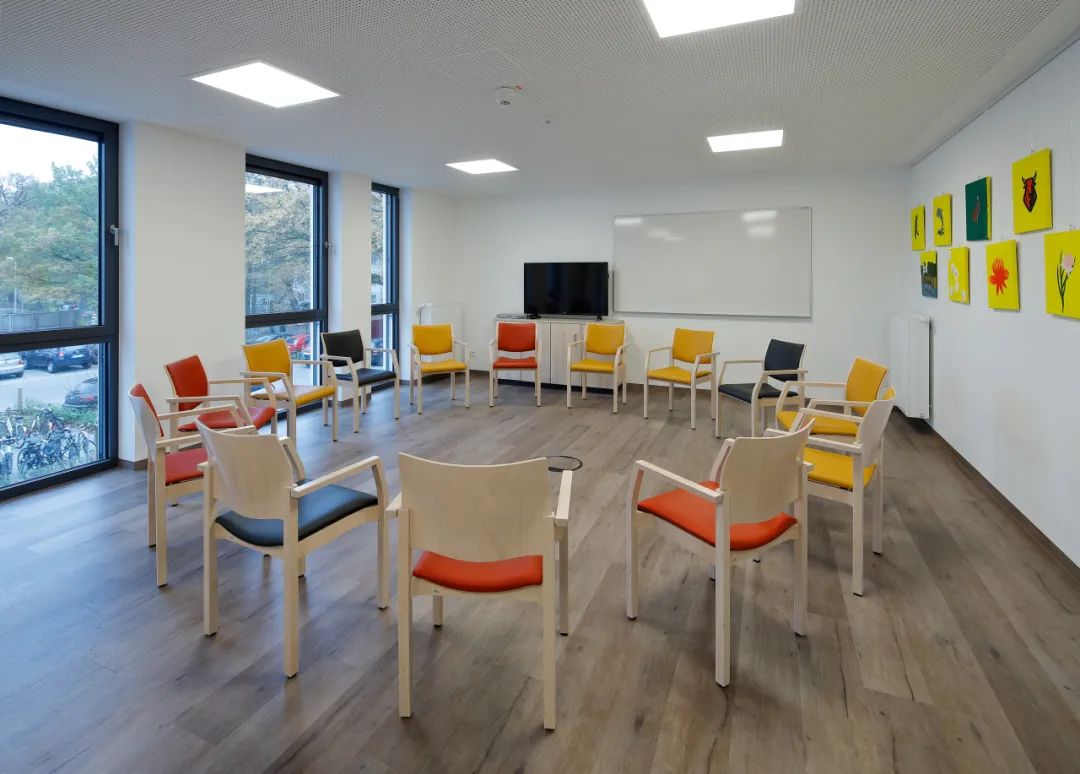
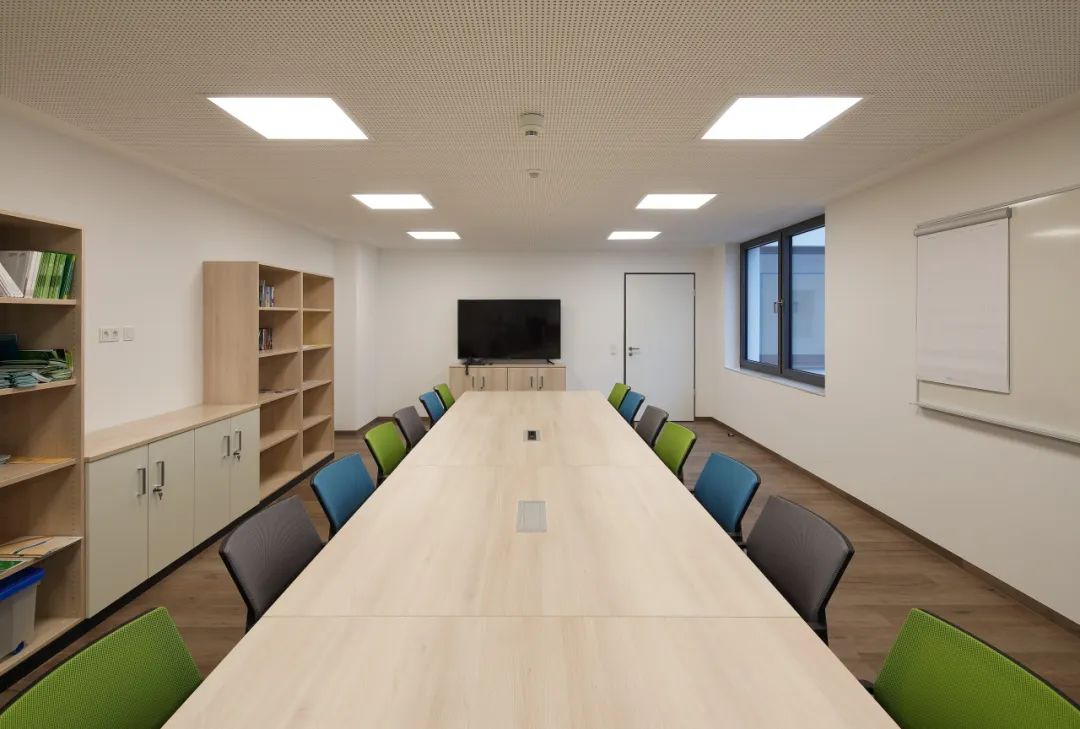
团体活动室
©Jürgen Landes
病房的设计精心考量了空间的尺度、明亮度、朝向等,为患者营造清新、舒缓的氛围。此外,所有病房均采用了灵活的平面形式 ,以便在功能需求发生变化时可以重新调整房间布局。
The design of the ward rooms carefully considers the scale, brightness, and orientation, creating a fresh and soothing atmosphere for patients. Additionally, all wards have flexible floor plans to accommodate changes in functional requirements.
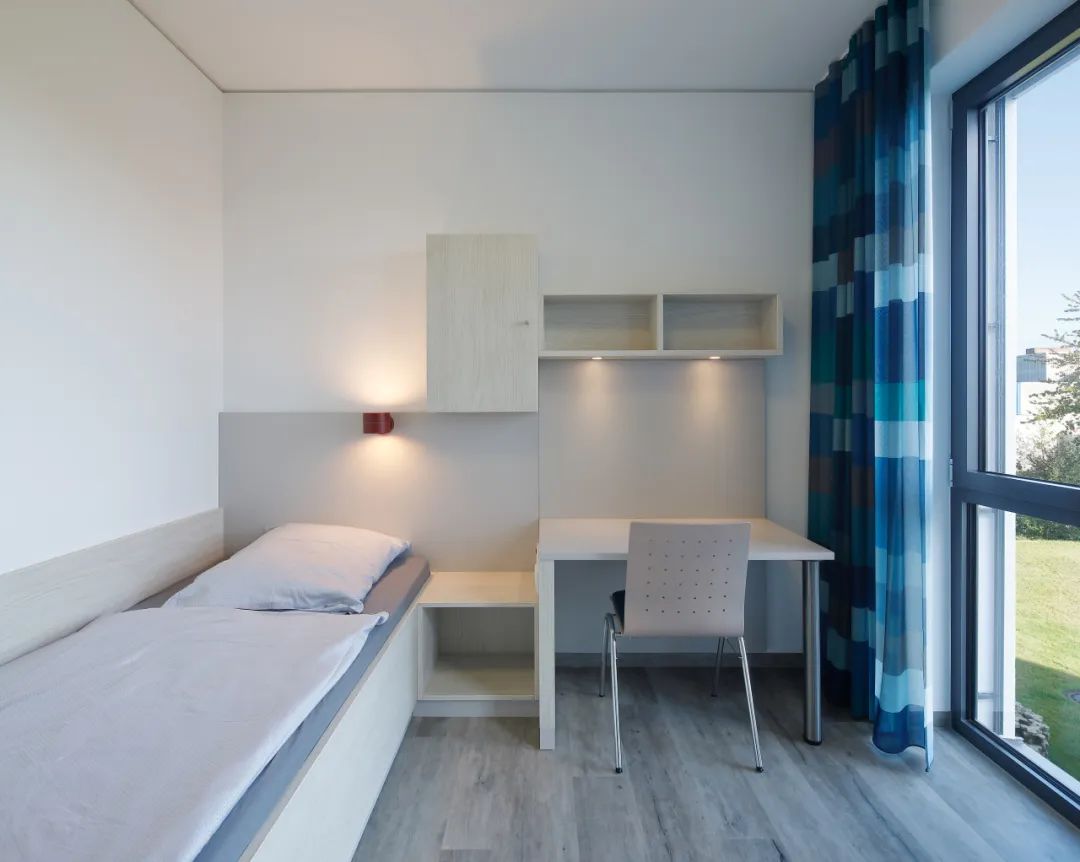
病房
©Jürgen Landes
03
融入自然的治疗过程
Healing Process in Nature
在支持建筑功能高效运行的同时,设计亦延续盖博建筑一以贯之的“自然疗愈”理念,以建筑内外的景观推动更舒适惬意的治疗过程,使“自然”成为治疗的重要组成部分。
在景观营造上,两个内部庭院均以植物结合石景创造出质朴的自然环境;而建筑之外,西南侧的入口隐于树林,营造出宁静的氛围,东北侧的空地则被设计为一处运动场,为患者提供一处受保护、有安全感的疗愈空间 。
While supporting efficient operation, the design also emphasizes the 'natural healing' concept, promoting a more comfortable treatment process through both the internal and external landscapes, making 'nature' an important factor in treatment.
The internal courtyards combine plants with stone features to create simple landscapes. Outside the building, the southwest entrance is hidden in the forest, creating a peaceful atmosphere, while the northeast open space is designed as a sports field, offering patients a healing space that feels protected and safe.
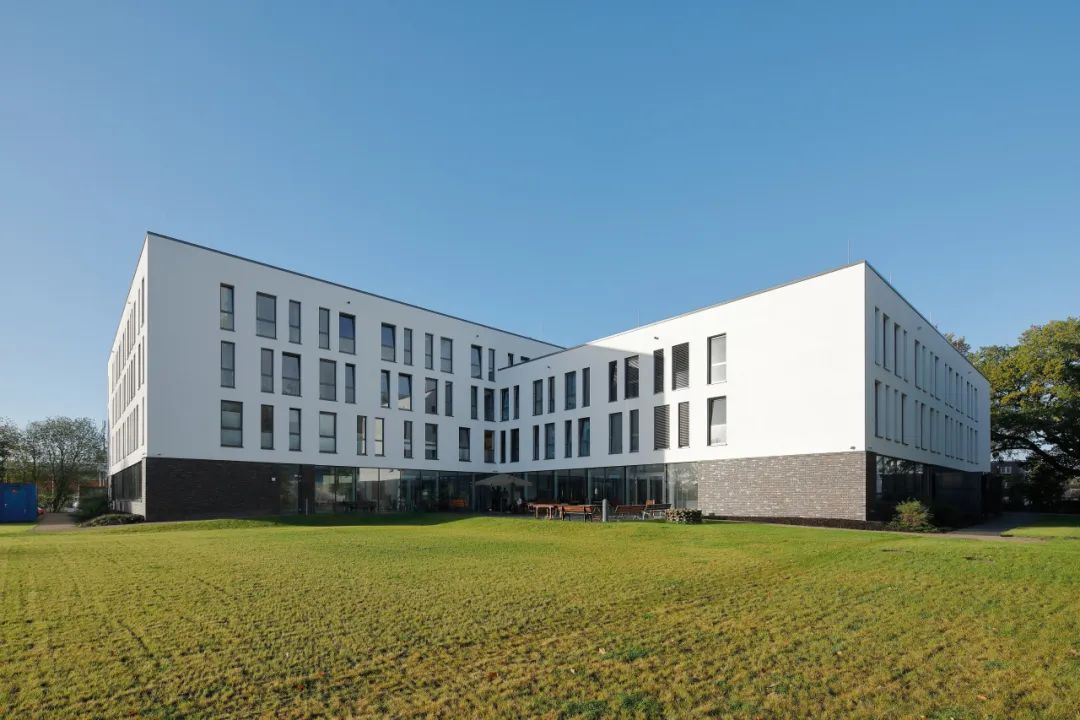
建筑外部的运动场
©Jürgen Landes
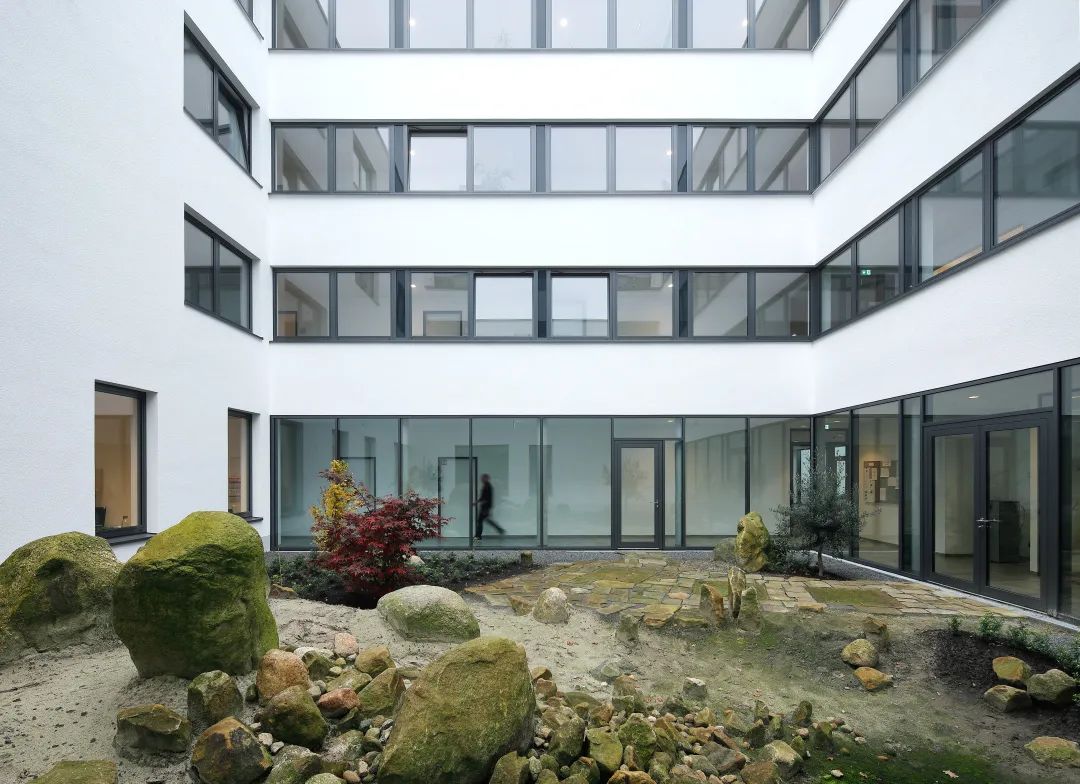
建筑内部的石景花园
©Jürgen Landes
在建筑设计上,首层以大面积的落地窗,构造室内外的视觉联系,使一系列功能空间亦成为人们愿意驻足的公共空间。
而首层之上,每一层都设有露台,使得围绕庭院的连廊不仅在视觉上享受花园景观,更在空间上可以亲近自然。
病房则沿着建筑外围布置,使患者都可以欣赏到周围的景色,进一步促进自然疗愈和人性化关怀。
On the first floor, floor-to-ceiling windows are used to create a visual connection between the indoor and outdoor spaces, transforming a series of functional areas into inviting public spaces.
On the upper floors, each floor is designed with a terrace, allowing the corridors surrounding the courtyard to not only provide visual enjoyment of the garden landscape but also create a spatial closeness to nature. The wards are arranged along the building's perimeter, allowing patients to enjoy the surrounding scenery, further promoting natural healing and providing humanized care.
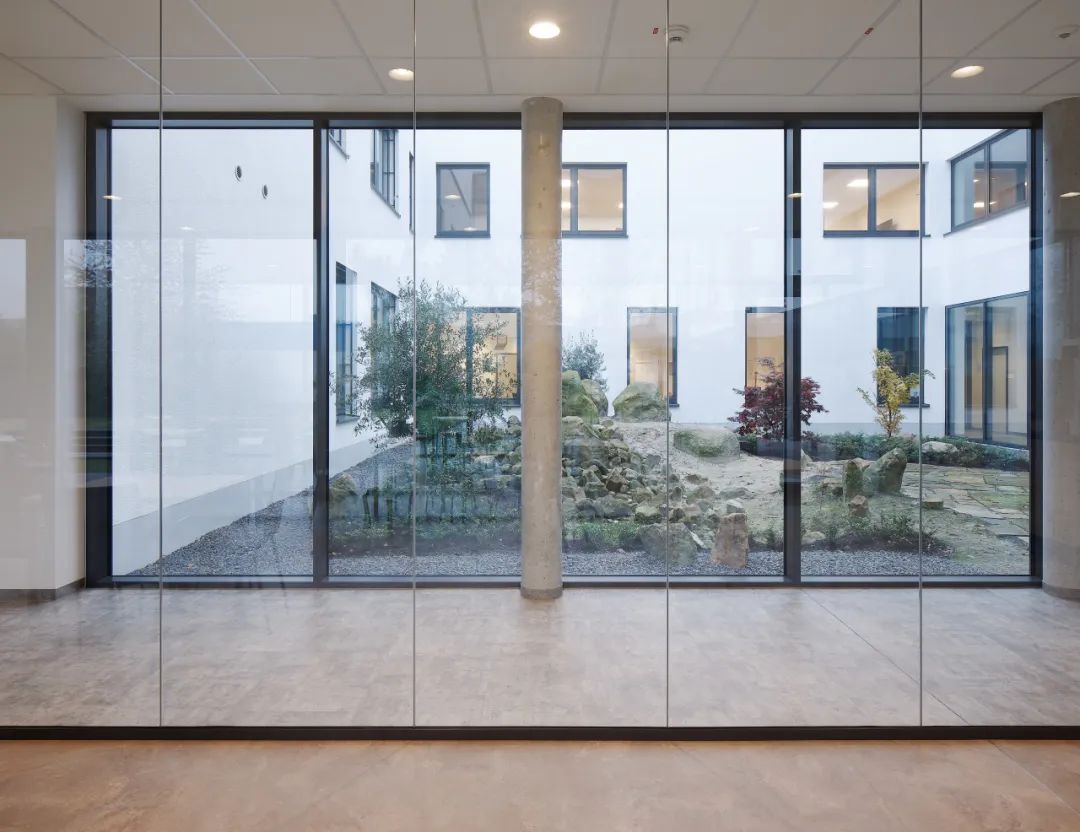
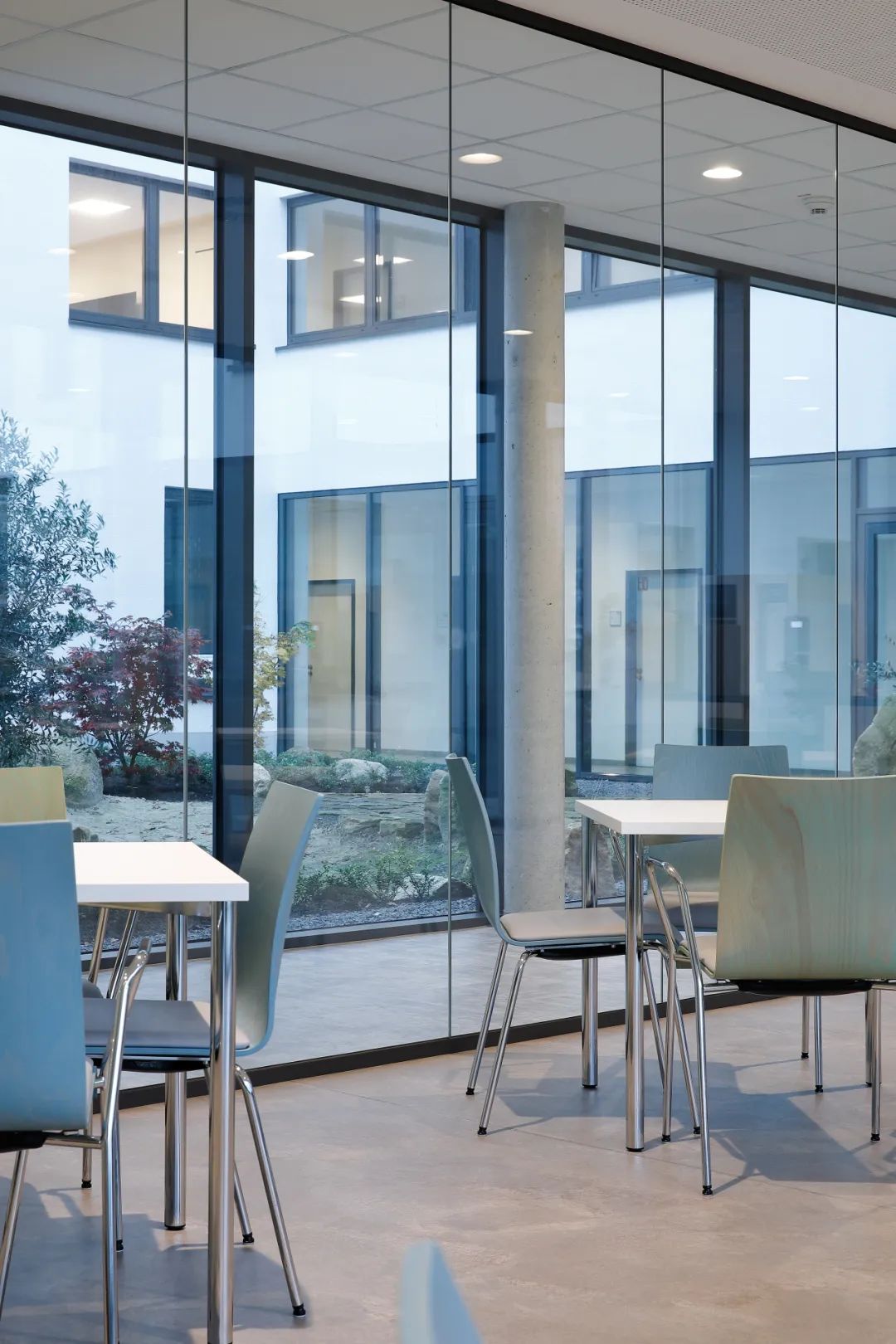
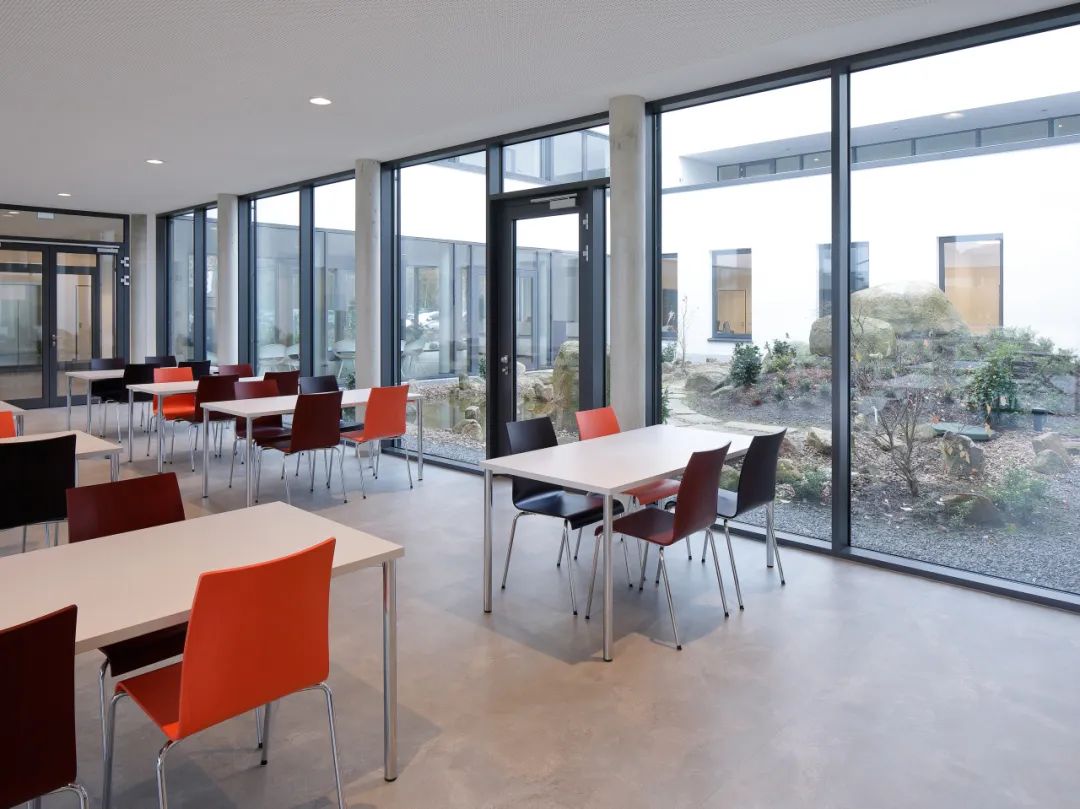
首层大面积景观落地窗
©Jürgen Landes
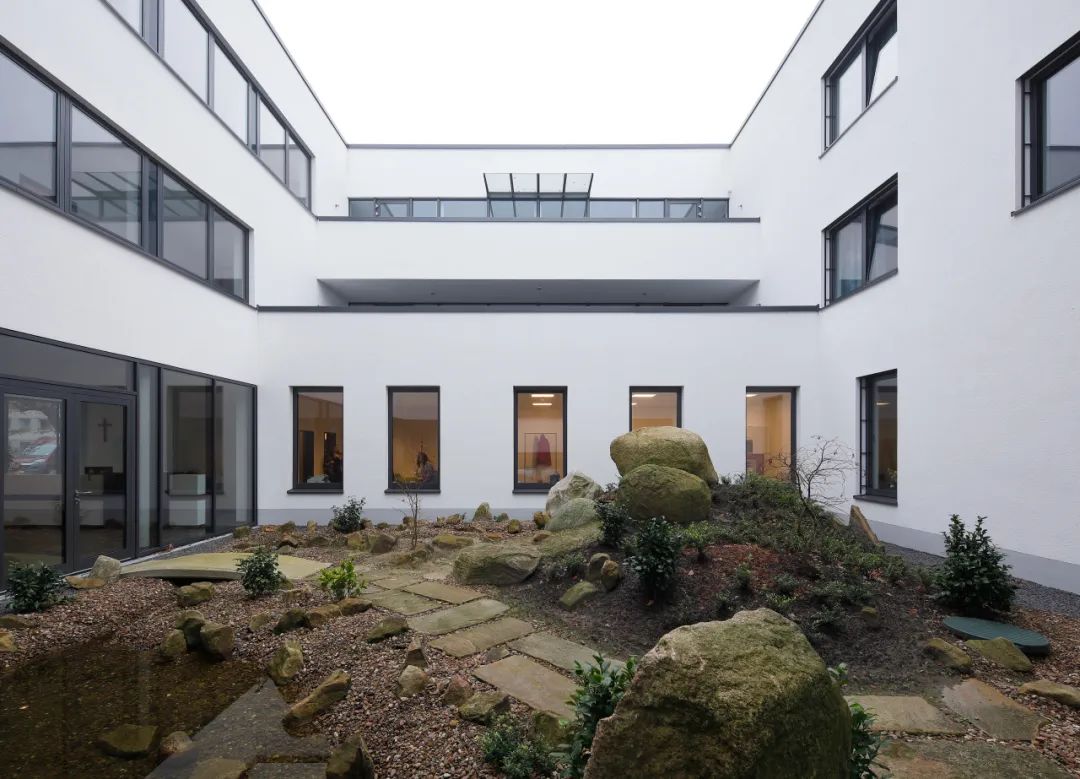
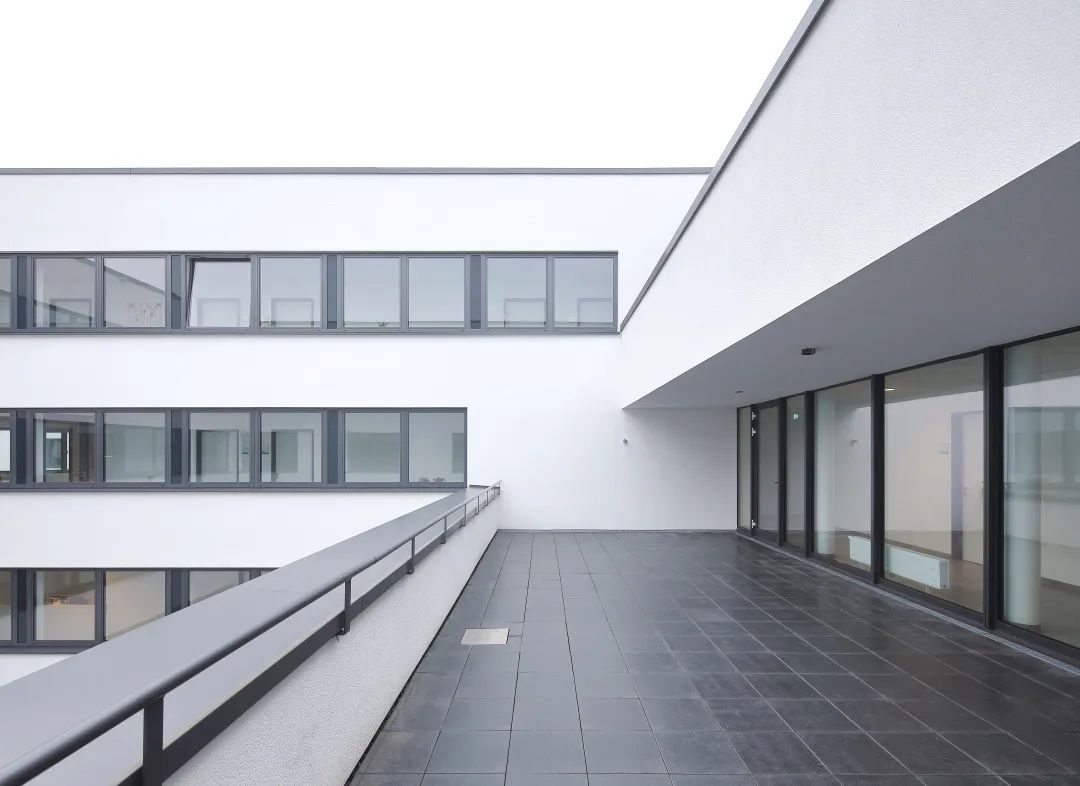
上层景观露台
©Jürgen Landes
项目图纸Drawings
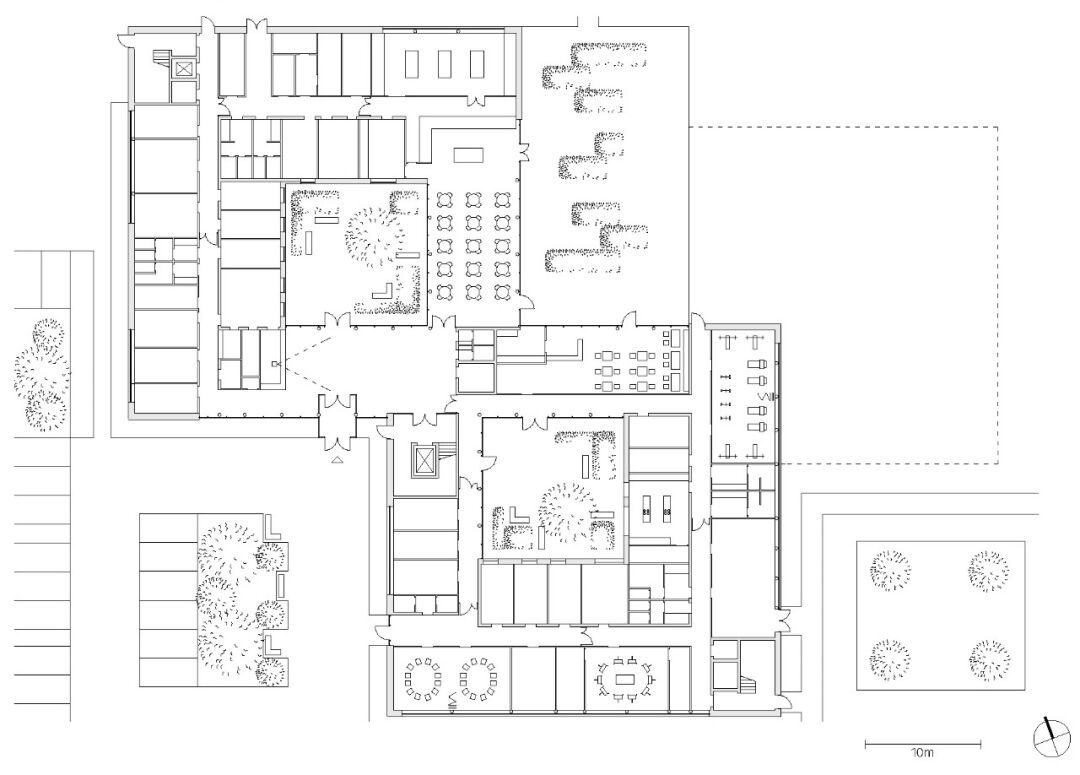
奥尔登堡成瘾治疗中心 - 首层平面图
©Gerber Architekten
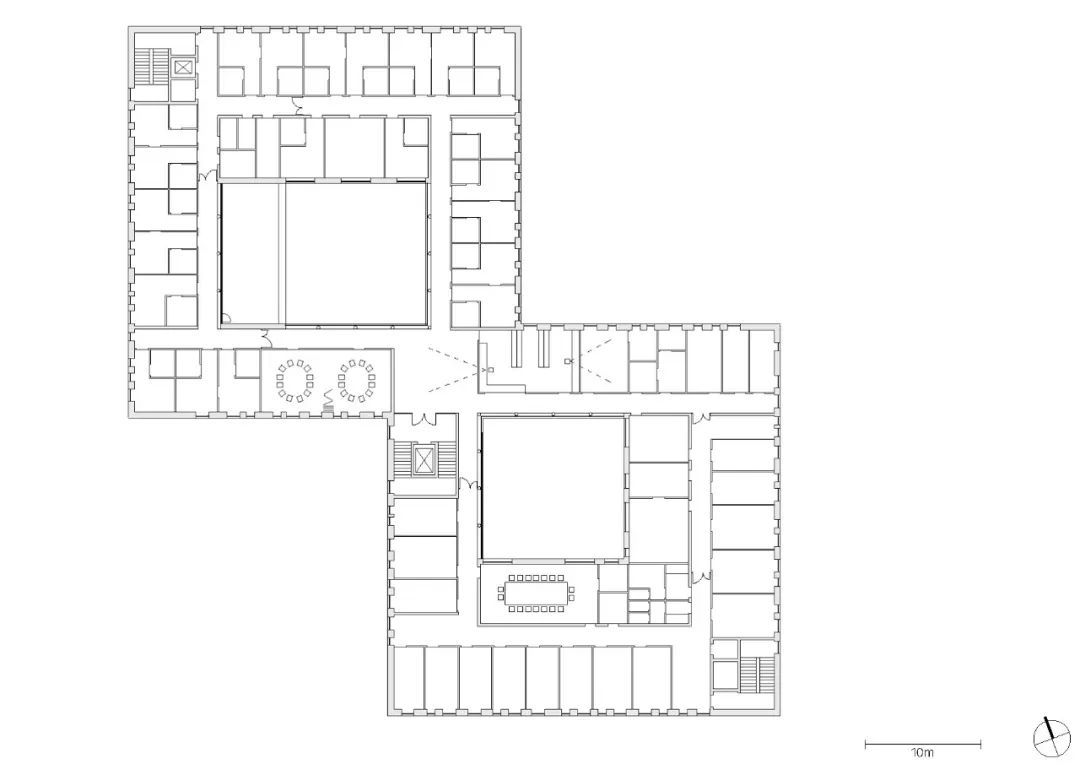
奥尔登堡成瘾治疗中心 - 二层平面图
©Gerber Architekten
项目信息Project Data
奥尔登堡成瘾治疗中心
业主:奥尔登堡路德教堂执事会
设计范围:建筑设计
设计时间:2013 (竞赛一等奖)
建设时间:2015–2017
建筑面积:6,710 平方米
用地面积:8,200 平方米
其他说明:80床位
Addiction Treatment Center in Oldenburg
Client: Diaconia of Ev.-Luth. Church of Oldenburg
Service Scope: Architecture
Design: 2013 (1st prize in Competition)
Construction: 2015-2017
GFA: 6,710 sqm
Site Area: 8,200 sqm
Specialty: 80 beds
评论